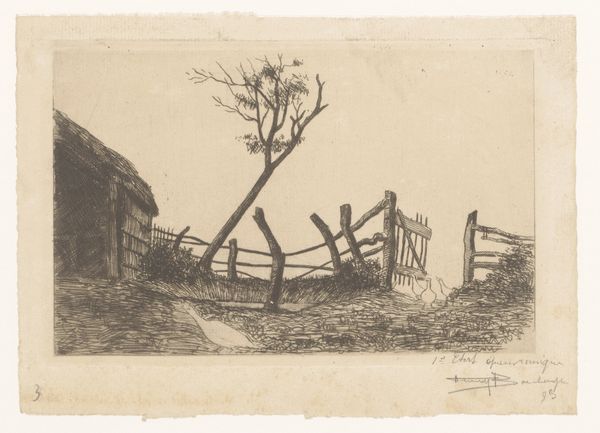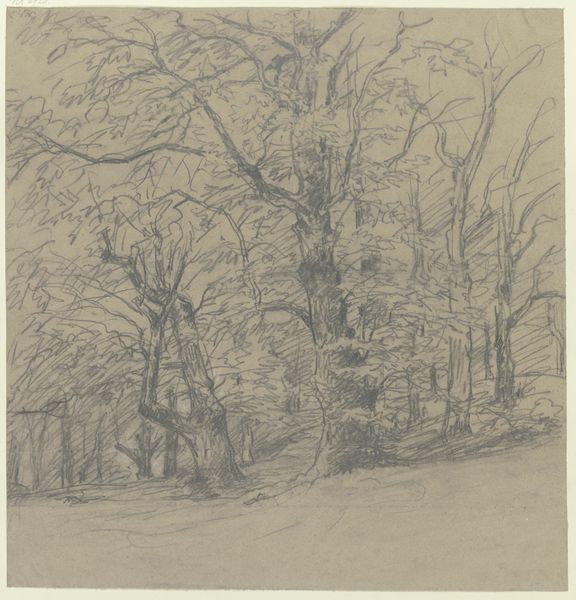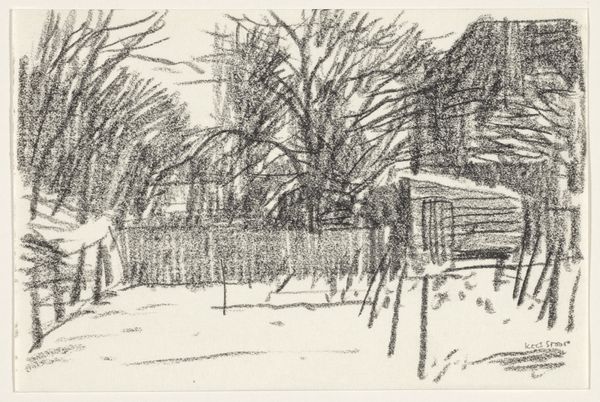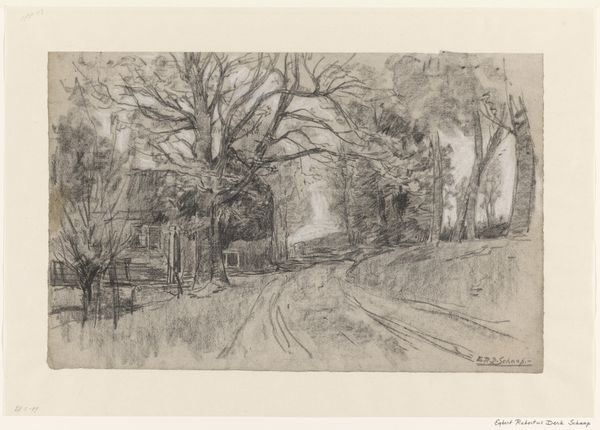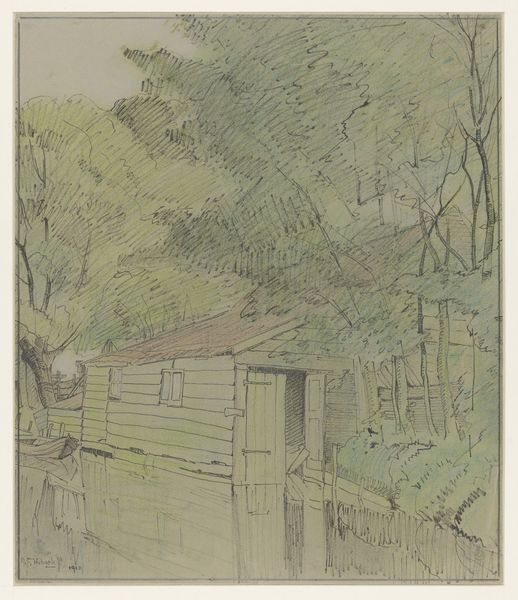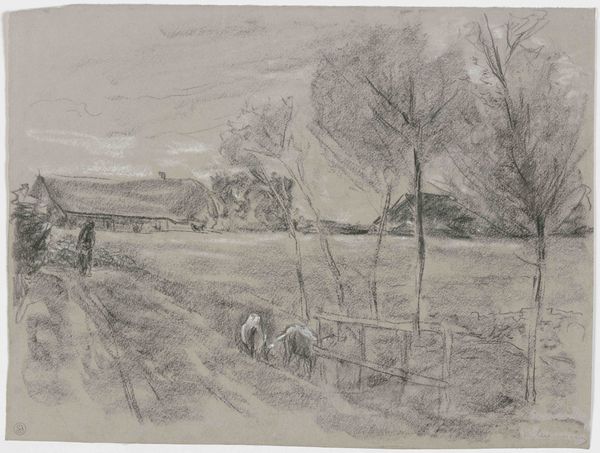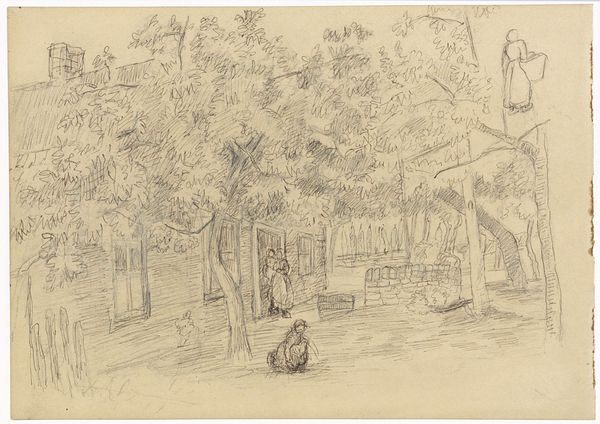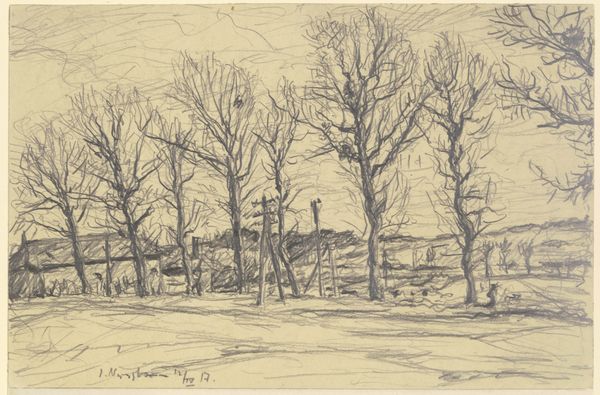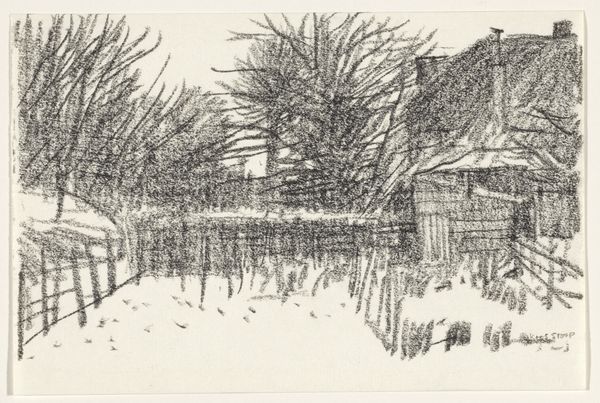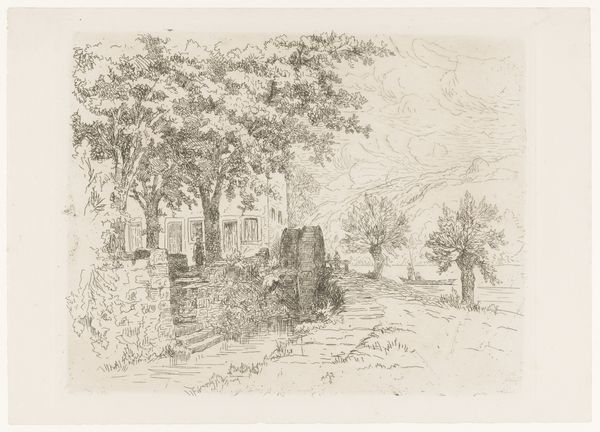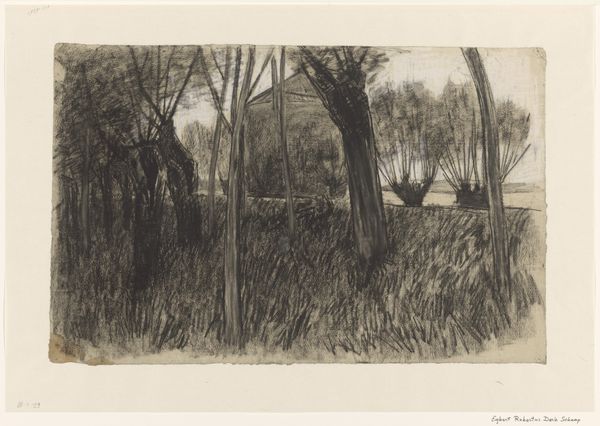
drawing, pencil
#
drawing
#
landscape
#
pencil
#
northern-renaissance
#
realism
Dimensions: height 155 mm, width 252 mm
Copyright: Rijks Museum: Open Domain
Editor: This evocative drawing by A.W. Molenkamp, created sometime between 1800 and 1950, is titled "Weg naar een poort in een bosrijke omgeving," which translates to "Way to a Gate in a Wooded Area." The artist used pencil on paper. Curator: The tonal range in the shading, particularly the foreground and trees, immediately establishes a sense of depth. The composition emphasizes the recession into space, pulling the eye toward that beckoning gate. Editor: It does feel like a threshold. Gates often represent transitions—perhaps journeys into the unknown. Forests in art are likewise symbolically dense places; they evoke ideas about the unconscious mind and liminal spaces. What do you think about the structure of the gate? Curator: Note the rhythmic succession of verticals – the gate posts, the bars. They contribute to the drawing's overall order, establishing a dialogue between control and wild nature. However, the gate isn't aligned centrally. This imbalance, subtle as it may be, heightens the sense of mystery, of something just out of kilter. Editor: The artist used pencil drawing techniques reminiscent of the Northern Renaissance style; there’s a realism in depicting details but there’s something else going on here. I see a path that seems obscured. The trees twist in strange shapes that hint at anxieties beyond surface appearances. It feels both inviting and ominous. Curator: The textural variations achieved with just pencil are noteworthy; smooth gradations for the path contrasting against the hatching of the trees. These tonal values aren't just descriptive, they elicit feeling and establish tension within the framework of an essentially bucolic setting. Editor: Molenkamp really understood how charged a single, humble symbol—a forest, a gate—could become. Curator: The very conscious structure supports it, even as the symbolic narrative unfolds. A compelling example of how form dictates function...or is it the other way around?
Comments
No comments
Be the first to comment and join the conversation on the ultimate creative platform.
